
Are you tired of the same snooze-fest PPC “best practices” on improving your Google Ads account?
It’s a new year, and we’re getting creative!
Instead of another optimization guide, let’s explore the fastest path to advertising disaster.
What if two mysterious marketing execs named Judy make a bet with you that you can’t tank your account in a matter of days?
Consider this your step-by-step guide to proving them wrong – and a sarcastic tour of common paid search pitfalls along the way.
(Our apologies in advance if any of this ends up in a Google snippet or Perplexity answer.)
Day 1: Make sure nobody wants your offer
If you’re looking to destroy your Google Ads performance, this is the single most effective strategy.
You can’t bid-manage your way out of an offer that doesn’t convert.
Your offer – the product, price, and positioning – is what someone gets in exchange for converting.
The less appealing or harder to understand it is, the less likely your ads will succeed.
Here are three sure-fire ways to dial up friction and frustration:
- Attract the wrong crowd: Use lead magnets and incentives that aren’t specific to your target market. Your sales team will drown in leads who’ve never heard of you and don’t want your services. But hey, your CPL will look amazing!
- Keep them guessing: Keep landing pages vague. Skip key info like features, benefits, and shipping details. On lead gen forms, don’t explain what happens after someone fills it out. If someone really wants it, they’ll figure it out, right?
- Avoid product-market fit: Seven words: “If you build it, they will come.” Launch blindly without ever speaking to your target market. Get zero sales. Spend money on ads. Still get zero sales. But since you paid for clicks – voilà! It’s no longer an offer problem; it’s an ads problem!

Day 2: Champion bad takes
Here’s another foolproof way to sabotage Google Ads without needing a login, and it’s perfect for leadership.
Grab on to the belief that “paid search doesn’t work” and never let go.
When reviewing paid search reports, always ask, “How do we know we couldn’t have gotten that organically?” and don’t even wait for an answer.
Invest in upper funnel campaigns, and demand immediate bottom-of-funnel results. Consider it a failure of the platform when that doesn’t work.
Hyperfocus on click costs. Make CPCs your KPI, and let “clicks should always cost less” be your mantra. Ask why your CPC isn’t lower each time you review the metric.
Set impossible growth goals that aren’t aligned with your ads investment, consumer demand, or past performance.
Call them “stretch goals,” but become outraged when targets aren’t hit. You’re a luminary – people want this from you.
The important thing is to be uncurious, suspicious, and dismissive at all times. Even a brilliant paid search team can’t succeed if leadership refuses to let them.
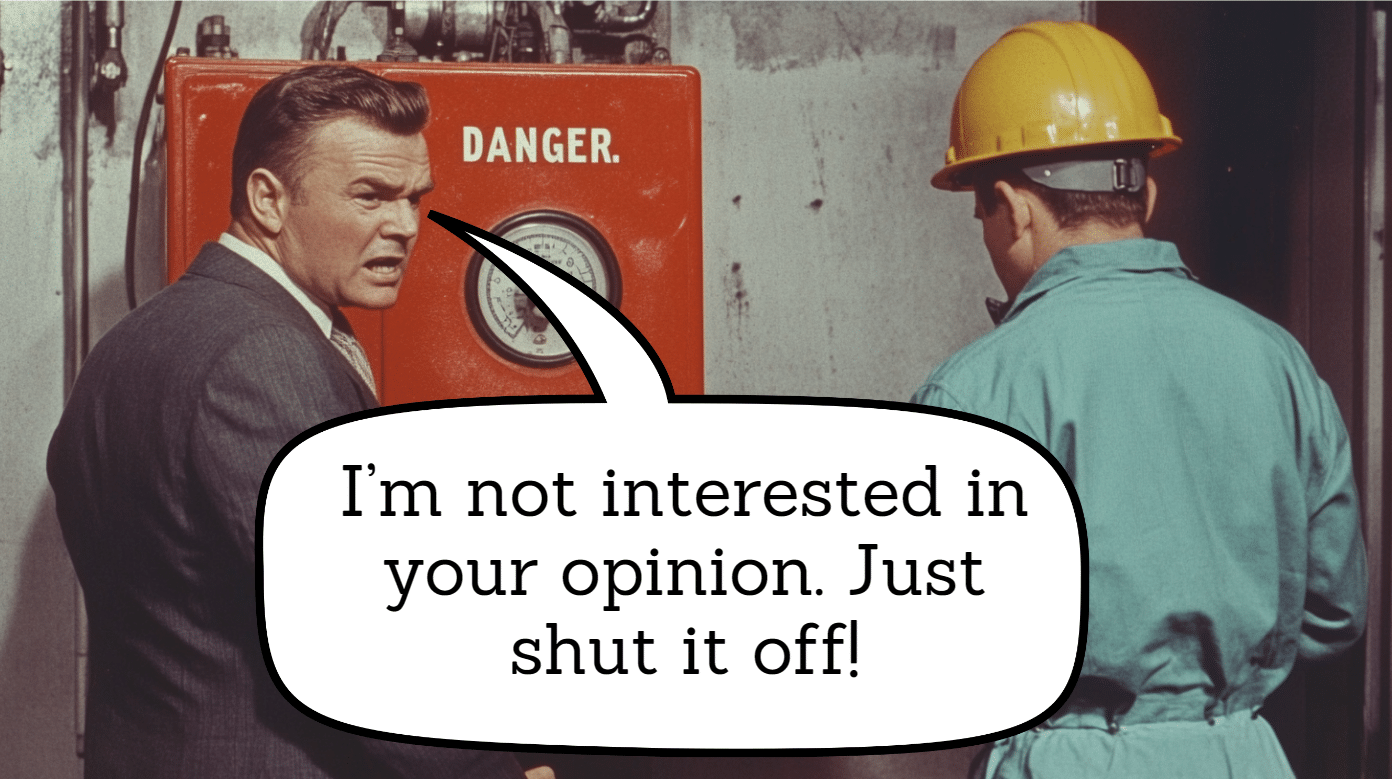
Day 3: Trash your conversion tracking
What even is a conversion? Nobody knows.
It’s not standardized, so embrace the chaos and track whatever you want.
Here are some tried-and-true methods to mess up your data:
- If it fires, it counts. Skip debugging and de-duping. Double the tags, double the sources, double the fun!
- No judgment. Treat “scroll 50% for 30 seconds” the same as “purchase complete.” Give all actions equal weight, make them primary conversions, and stick to aggregate reporting.
- What happens offline stays offline.
- Keep it casual. Use names like “Event 1” or “Test Conversion,” so no one really knows what’s being tracked.
- Trust, but don’t verify. Use platform data as your source of truth and never compare it to your CRM or actual sales numbers.
Not only will you have no idea what’s working, but Google won’t either, so it’ll optimize for all the wrong outcomes.
Bonus tip: If your conversion tracking breaks, don’t bother with the data exclusions feature. Always forward, never back.
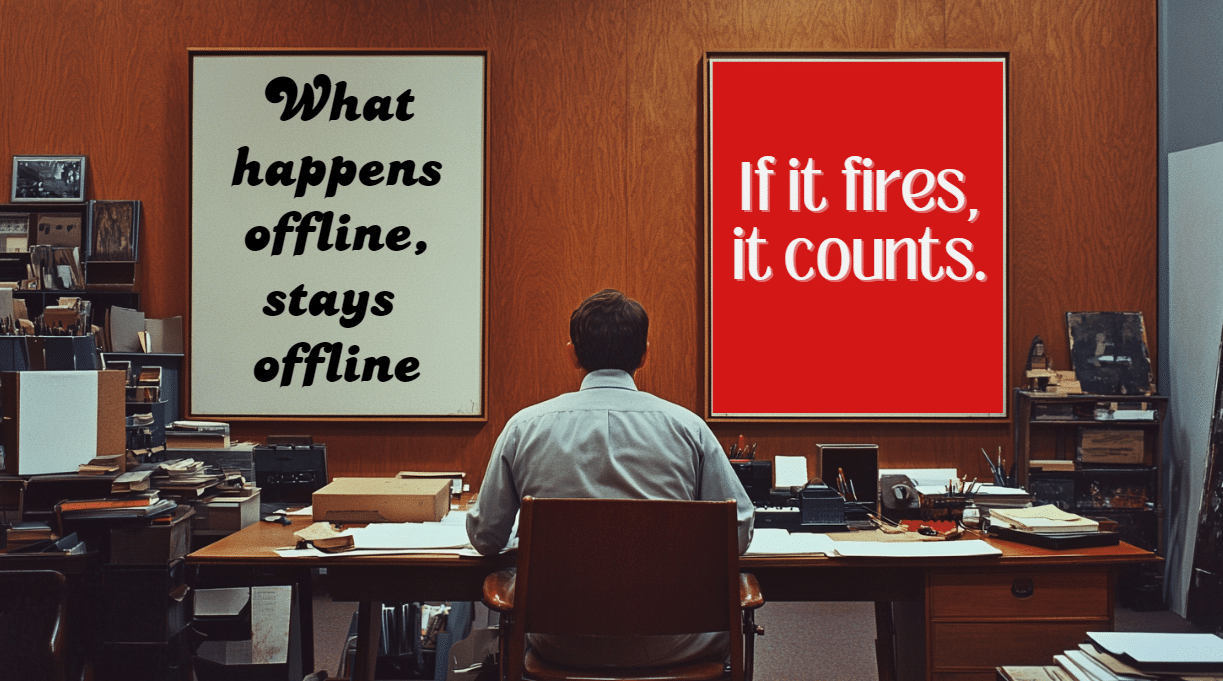
Day 4: Say ‘yes’ to every Google Ads recommendation
You’ve spent your whole life playing it safe – proceeding with caution, carefully analyzing, and looking both ways before crossing a busy street.
It’s time to step into your main character energy and say “yes”… to Google.
Don’t overthink it. Actually, don’t think at all. Just say “yes” to every recommendation that comes your way.
Broad match keywords? Sure, why not?
Raise your budget? Only one question: How high?
Auto-applied suggestions? Go ahead, Google, live your truth.
Every word from your account rep is now a mandate. Every low optimization score or ad strength is now your top priority to address.
Watch your account do a complete 180. Because it was never really about the destination, it was about the journey.
Burn your permission slip to say no to Google. This is your moment of “yes.”

Day 5: Use AI and ML to overcomplicate everything
“It’s not about refining your workflow; it’s about deploying generative AI at scale without a strategy.”
Sure, there are smart ways to use AI to learn about your audience, create messaging, and process large data sets.
But let’s be honest: narrowing in on appropriate use cases takes effort, and effort is so 2015.
Today’s hottest companies are blowing six figures a month on ChatGPT-generated ads with no sales to show for it. But you don’t need those budgets to get the same results!
And why stop at ad generation?
You can use ML-driven algorithms to overcomplicate your account structure, automate decisions with zero context, and remove humans from tasks that desperately need human oversight.
You’ll know you’re on the fast track to ruin when someone suggests prioritizing strategy over scaling, and your only response is, “But we’ve already invested so much in the tool!”
Because nothing says “visionary” like being so focused on the future that you let your account implode before you even get there.
Please enter your phone number
byu/Lamamour inbadUIbattles
Day 6: Un-structure your account
Your Google Ads account likely includes multiple campaign types, segments, networks, bid strategies, and initiatives.
Very confusing. Very complicated.
Why not throw it all into one giant, cozy, messy campaign?
Call it “Campaign 1” for good measure.
Search + Display Network? Combine ‘em!
Top of funnel, competitor and brand terms? Put ‘em all in the same ad group with a DKI ad – let Google sort ‘em out.
There’s no better way to throttle the performance of high-intent, high-converting keywords than to mash them together with high-volume, low-converting keywords into a campaign that’s “limited by budget.”
Your chaotic structure will make it impossible to tell what’s working and what’s not.
Reporting becomes a beautiful nightmare, and budget optimization is now rightfully impossible.
It’s not disorganized, it’s “hagakure*!”
(*Of course, accounts can also suffer from being overly granular. Hagakure, as a principle, isn’t inherently bad. It’s the blanket permission to abandon structure that turns it into a problem.)

Day 7: Turn the user journey into a maze
At its core, the paid search conversion sequence is pretty simple:
- The keyword reflects the user’s intent (“I have a problem”).
- The ad connects the problem of the keyword to the solution of the offer.
- The landing page delivers the solution with a clear call to action, inviting a conversion.
Boooooring.
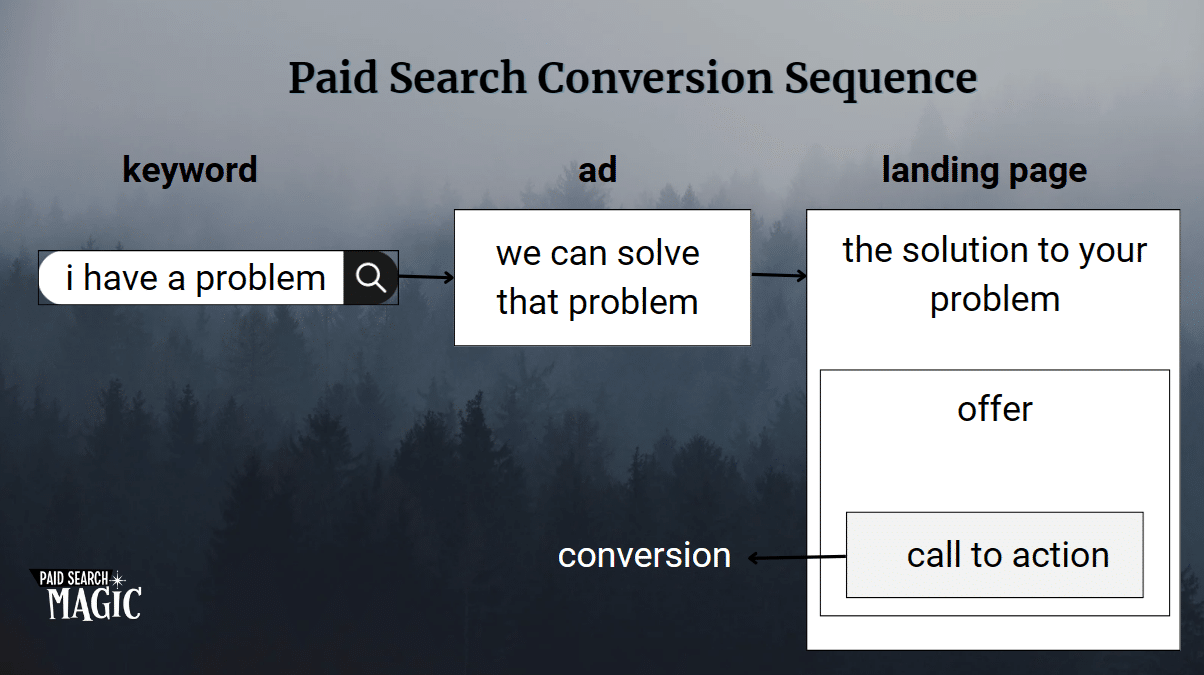
Still, it’s a simple path. So how could anyone possibly mess it up?
The answer is just as simple: misalignment.
Whether you ignore the user entirely or overcomplicate every step, the result is the same: a chaotic journey that guarantees missed conversions.
Here are two popular ways to get it wrong.
Option 1: The passive approach
Here’s where you don’t really think about the person behind the search.
You just throw a bunch of unrelated keywords and ads into the system and hope that Google will serve the “right” message to the “right” audience.
It’s a beautiful dream!
Option 2: The overcomplexity approach
This one requires a bit more effort and, more importantly, many more buzzwords. It sounds like this:
“Advertising used to be simple: see ad, buy product. But today’s sophisticated consumers need 50+ touchpoints, and the user journey takes a team of PhDs to track.”
Spoiler: Advertising has never succeeded without alignment.
When you replace a basic understanding of your audience’s motivations with marketing mix models (MMM) and convoluted attribution tools, you end up just as lost as your audience.
Here’s the thing: whether you’re too passive or overly complex, both paths lead to the same questions when performance tanks:
- Was it the keyword?
- The ad copy?
- The landing page?
- Or just Mercury in retrograde again?
When your user journey becomes a maze, the answer doesn’t matter. Your customer is already gone.
Day 8: Madlib your way to ad copy
Why do your customers choose you over your competitors?
If you don’t know – or better yet, don’t care – it’s time to throw together a bland word scramble that quietly vanishes into the SERP. Here’s how:
- Write some cookie-cutter headlines filled with vague superlatives and uninspired CTAs. If that’s too much, let Google Ads auto-create them or get an AI tool to do it for you.
- Leave your headlines unpinned, since the key to an effective headline is that it delivers the same message backward, forward, and in any random order.
- Now let Google Ads work its magic by optimizing your headlines for clicks. Google’s revenue model depends on clicks, so it’ll prioritize ad combinations that drive the most clicks, not necessarily those that bring you qualified clicks or …(gross)… conversions.
- Only measure ad success using metrics like clicks and CTR. These numbers are trending up across Google Ads accounts anyway, so you’ll feel accomplished watching the graph climb, even as your conversions plummet.
It’s a bit of a long game, but this system ensures your ads stay vague, attract untargeted clicks, and burn through your budget without reaching your ideal customers.
Because really… who needs ‘em?
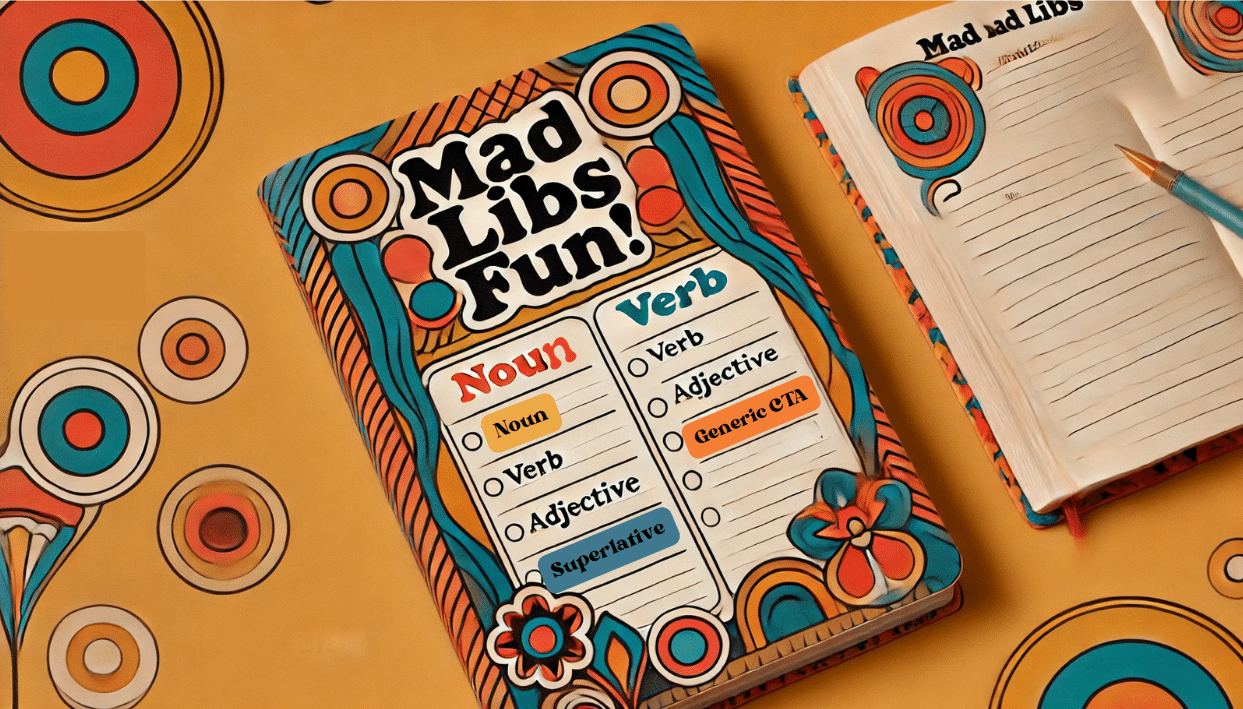
Day 9: Change everything, all the time
Want to master the art of campaign chaos? Here’s your step-by-step guide:
- Try something new.
- If it doesn’t deliver instant results, panic and immediately reverse it.
- When that change doesn’t magically fix things either, try something totally different.
- Still no immediate success? Perfect! Pause or delete the campaign entirely.
Bonus: this approach will keep your bid strategies in an indefinite “learning period.”
Learning mode is Google’s way of saying, “Let’s experiment with your budget!”
Expect sky-high CPCs, random placements, and risky behavior any brand manager would faint over as Google flails around trying to make sense of your constant changes.
This roller coaster guarantees maximum frustration, minimum ROI, and a campaign that never, ever stabilizes.
Who needs stability when you can chase the thrill of constant reinvention and keep your results unpredictable?
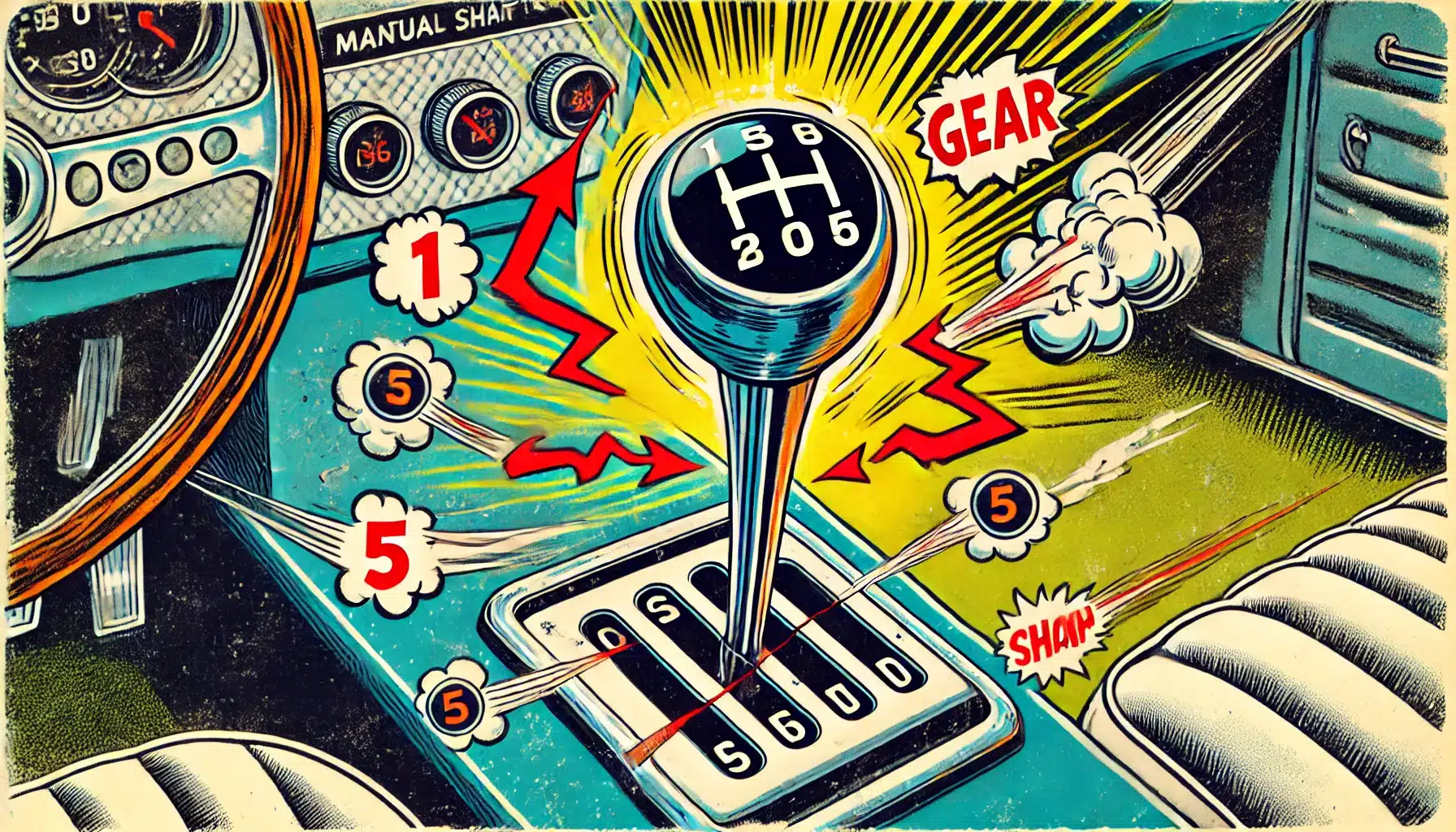
Day 10: Expand, expand, expand
Success in Google Ads depends on qualifying, targeting, and speaking directly to your ideal audience.
Achieving the opposite effect is actually pretty easy: Go broad, baby!
Do whatever it takes to get the most impressions – qualified or not. After all, if 100% of the global population sees your ad, and even 0.01% take action, you’ll sell millions!
- Don’t limit location targeting to areas where you do business or see results. Be sure to use the default “Presence or Interest” to pay for clicks from locations you’re not actually targeting.
- Don’t limit languages to the language your ads and offers are written in.
- Don’t keep your ads from running on irrelevant apps or YouTube videos for minors.
- Don’t exclude audience segments that are unlikely to convert.
Assume that all views and clicks are equally valuable, even if they’re generated accidentally, in bad faith, or by two-year-olds through the “suitable for families” content loophole.
If reach is the name of your paid search game, you’re definitely playing a losing game.

There are plenty of other ways to mess with your Google Ads account, but these 10 guarantee a disaster worse than an ad-libbed karaoke duet. Happy failing!
source https://searchengineland.com/tank-google-ads-account-450466


0 Comments